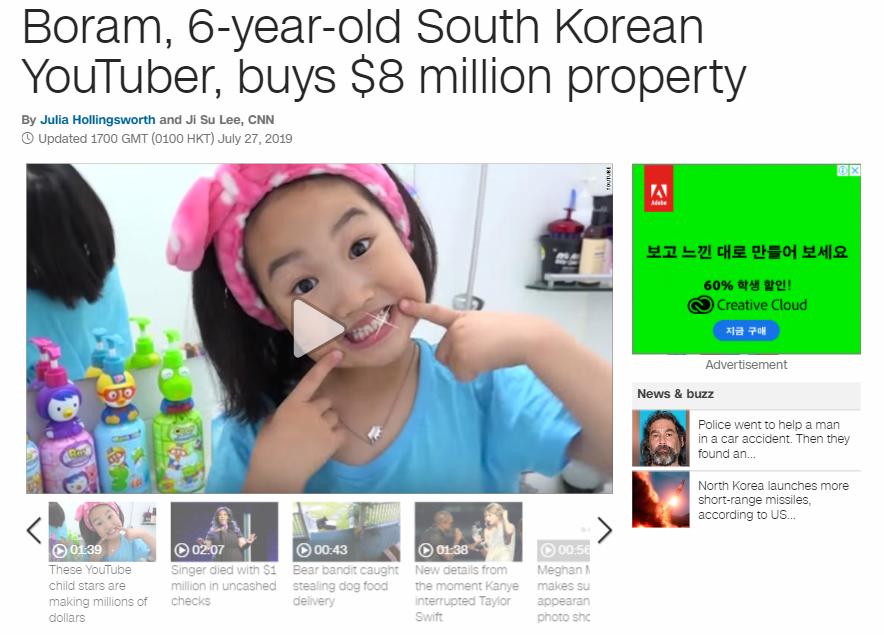
Kid YouTubers, Is This Okay?1)
The 2000s has seen a flood of information in society. Anyone and everyone can produce information and share it with others, creating new communities in virtual space. As a result, internet blogs and personal websites that record a person’s daily life or details information have become very popular. Individuals are also expressing and producing information through the media such as photos and messages. However, in 2005, once the trend of texting and images passed, platforms that enable one to communicate with others through videos emerged. Founded under the slogan "broadcast yourself,” YouTube is the world's largest free video sharing site that allows users to watch, upload and share videos. Because of this system, YouTube equates to a hub where video channels from all over the world are converging. Since offering a Korean language service in 2008, YouTube has expanded and now offers its services in 54 languages. YouTube has grown rapidly, and it is still growing with the number of monthly log-in users reaching about 1.8 billion people, according to the research center eBEST Investment & Securities Co. YouTube Creator has attained huge attention among Koreans, and its content production group has allowed the creation of new jobs. It is no longer just a hobby activity.
The biggest feature and advantage of YouTube is the number of individuals who are able to create and upload video content without significant restrictions. However, these features of YouTube are both its advantage and biggest loophole. One of the key problems is its individualism. Individuals on YouTube are the creators of content. There is no age limit, and today many people are worried about kid YouTubers. One such example is “Boram Tube”. In 2014, the parents of the child featured in Boram Tube were accused of child abuse by the international relief group Save the Children. It claimed the parents allowed the posting of provocative videos such as a child riding a toy car in the middle of the road and a child stealing money from her father's wallet. While YouTube content allows some control over ages to view and produce content, its regulatory guidelines for content are not properly applied. Especially, for YouTube content targeting children, the seriousness of the problem is even greater, and society needs to consider that children featured on some channels are the targets of adult consumption. Robert Kyncl, Chief Business Officer at YouTube, described YouTube as a ‘revolution’. YouTube's growth and influence are revolutionary, but it is also a cultural lag on society as it is not properly regulated compared to its rapid platform growth. It is important for global citizens to struggle for a healthy nation and its future generations, the children who will create future cultural content on YouTube. There is an urge for the cultural consumer to critically consume content beyond simply viewing it as entertainment and interest.
1) Park Hyuncheol, “Kid YouTubers, Is That What Child Wanted?”, The Hankyoreh, August 19, 2019


